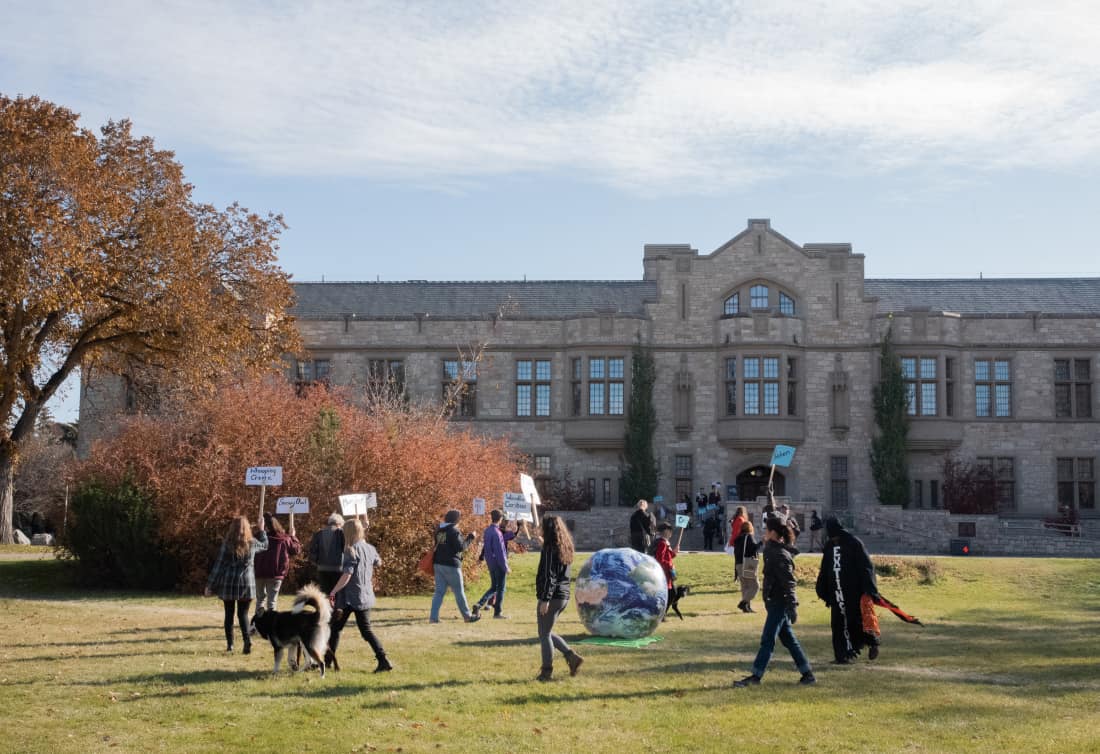
Though Extinction Rebellion is known for its disruptive “civil disobedience” demonstrations globally, Saskatoon’s rally differed greatly.
On Oct. 18, the environmental activist group Extinction Rebellion Saskatchewan held a climate action rally in the University of Saskatchewan Bowl. The rally was organized by Claire Card, a U of S faculty member who ran as an MP for the riding of Saskatoon–University. She says the event was not political, instead it was focused on bringing everyone’s attention to the climate emergency and the actions needed to address it.
“These are peaceful protests and they’re meant to raise public awareness,” Card said.
Extinction Rebellion has received media attention and scrutiny for staging a series of disruptive protests globally. Most recently, the group has caused major traffic disruptions in Canada with some activists even scaling and shutting down bridges during rush hour in Montreal and Vancouver, leading to some arrests.
Saskatoon’s rally did not attempt to recreate these dramatic protests in any way. Rather, the protest featured Indigenous prayer and dance as well as a street theatre performance to prompt people into acting in accordance with a global crisis. Card says this change in tone away from disruption was intentional.
“As an organizer, I felt the tone should be more inclusive of our Indigenous knowledge and that there may be a time and place for [civil disobedience],” Card said.
Arnold Naytowhow, a Métis man who works at the Saskatoon Indian & Métis Friendship Centre, was asked by the group to say a prayer and the Treaty 6 acknowledgement at the rally. He says that it is important for Indigenous people to continue raising awareness of the climate emergency.
“I remember my Elders telling me that it’s going to get worse, and it’s here already,” Naytowhow said. “There’s a lot of forest fires, storms and floods, and we’re not used to it but we’re going to have to get used to it.”
The street theatre performance at the rally was led by fourth-year urban planning student Lia Storey-Gamble. The act involved 20 participants holding signs of endangered animals and ecosystems circling an inflatable globe before a man dressed as a personification of extinction eliminated each of the species. Following the performance, the demonstrators laid on the steps of the Peter MacKinnon Building for a die-in protest reminiscent of other Extinction Rebellion demonstrations.
Storey-Gamble says that it is important to raise awareness in Saskatchewan because the province is not impacted by extreme events like hurricanes, making the threat of climate change easier to ignore. The street performance was also featured at the Global Climate Strike in front of City Hall last month.
“We’re hopefully going to get some people to start thinking about it and how our actions affect every other living creature on the planet,” StoreyGamble said.
Card also feels that raising public awareness of climate change is especially challenging in Saskatchewan because too many people are in a misinformation fog,” believing that it is not a threat.
“We have a huge corporate lobby that is fighting the truth … and flooding the public with doubt over things that are essentially existential threats, not only to ourselves but to so many species that we rely on,” Card said. “They’re ignoring the evidence-based, peer-reviewed science from thousands of scientists who told us the truth.”
—
Noah Callaghan/ Staff Writer
Photo: Victoria Becker/ Photo Editor